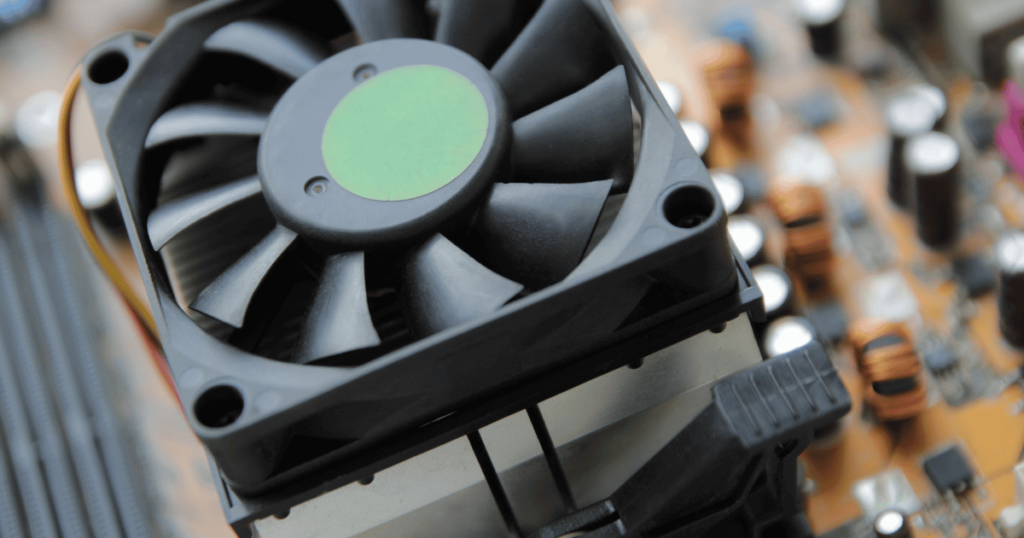Did you start your PC and miss that familiar, quick whisper of the fan kicking into action? Or maybe you’ve been baffled by your computer suddenly shutting down just minutes after starting up? You guessed it right! These are signs of a CPU cooler fan that’s not spinning – a small but crucial issue.
In this article, we’re going to explore what causes this silent fan to pause and how you can get it back in action. Let’s get your computer running smoothly again!
Dust or Obstruction

Many of us overlook cleaning our PCs regularly, often waiting until we notice odd behavior or overheating issues. One common problem arising from this neglect is dust buildup, leading to obstructions in the CPU fan. This blockage can prevent the fan from spinning.
In most cases, a simple cleaning can effectively resolve this issue. Carefully removing dust and debris from the fan and its surroundings can restore its functionality, ensuring better temperature management for your computer.
Ball Bearing Issues

Ball bearings in CPU fans are crucial for smooth and efficient operation. They allow the fan to rotate freely, reducing friction and noise. However, over time, these bearings can wear out or get damaged, leading to issues.
Signs of ball-bearing problems include unusual noises like grinding or clicking reduced fan speed, or the fan not spinning at all.
To address these issues, you can try lubricating the bearings if your fan allows it. For fans with sealed bearings, replacement is often the only solution.
CPU Connection

We’ve all been there, especially during PC upgrades. In the excitement of installing a new component, it’s easy to overlook small yet crucial details, like reconnecting the CPU fan cable.
Sometimes, we might think we’ve plugged it back in, but it’s not firmly connected, resulting in poor contact and the fan not spinning. This is why it’s important to double-check the CPU fan connection. A loose or improper connection can prevent the fan from receiving power, leading to cooling issues.
So, if you have recently removed your CPU cooler, check again to ensure the CPU fan cable is securely plugged into the correct header on the motherboard.
Frequently Asked Questions
Should a CPU fan always be running?
No, a CPU fan doesn’t always have to be running. Many CPU coolers have a feature where the fan will stop under low temperatures to reduce noise, known as “0 RPM Mode.” The fan will automatically start spinning once the CPU reaches a temperature that requires cooling.
Can I run my PC without a CPU cooler?
Running a PC without a CPU cooler is not recommended. The CPU cooler is essential for dissipating heat and keeping the CPU at a safe operating temperature. Without it, the CPU can overheat quickly, leading to potential damage or system shutdowns.
Conclusion
We hope this guide helped you pinpoint and fix the issue with your CPU cooler fan.
If one of our solutions worked for you, or if you found another way to get your fan spinning again, we’d love to hear about it in the comments below! Your experience might just be the perfect tip someone else needs.
And if you’re considering a new CPU cooler, be sure to check out our article on what to look for in a CPU cooler.
We're an affiliate
We hope you love the products we recommend! Just so you know, gameraround.com is a participant in the Amazon Services LLC Associates Program, an affiliate advertising program designed to provide a means for sites to earn advertising fees by linking to Amazon.com.

